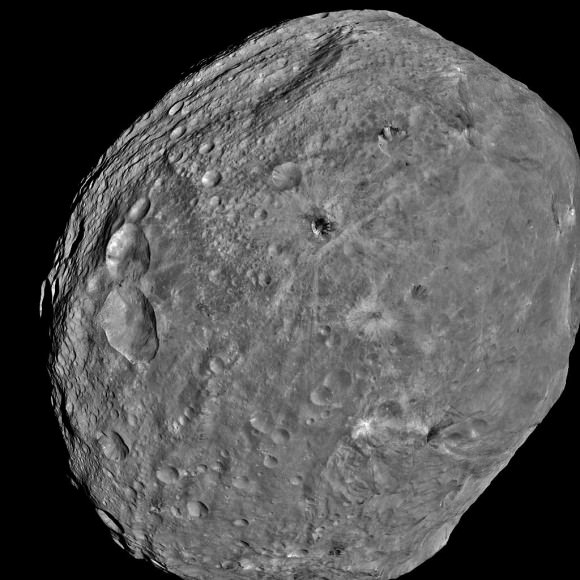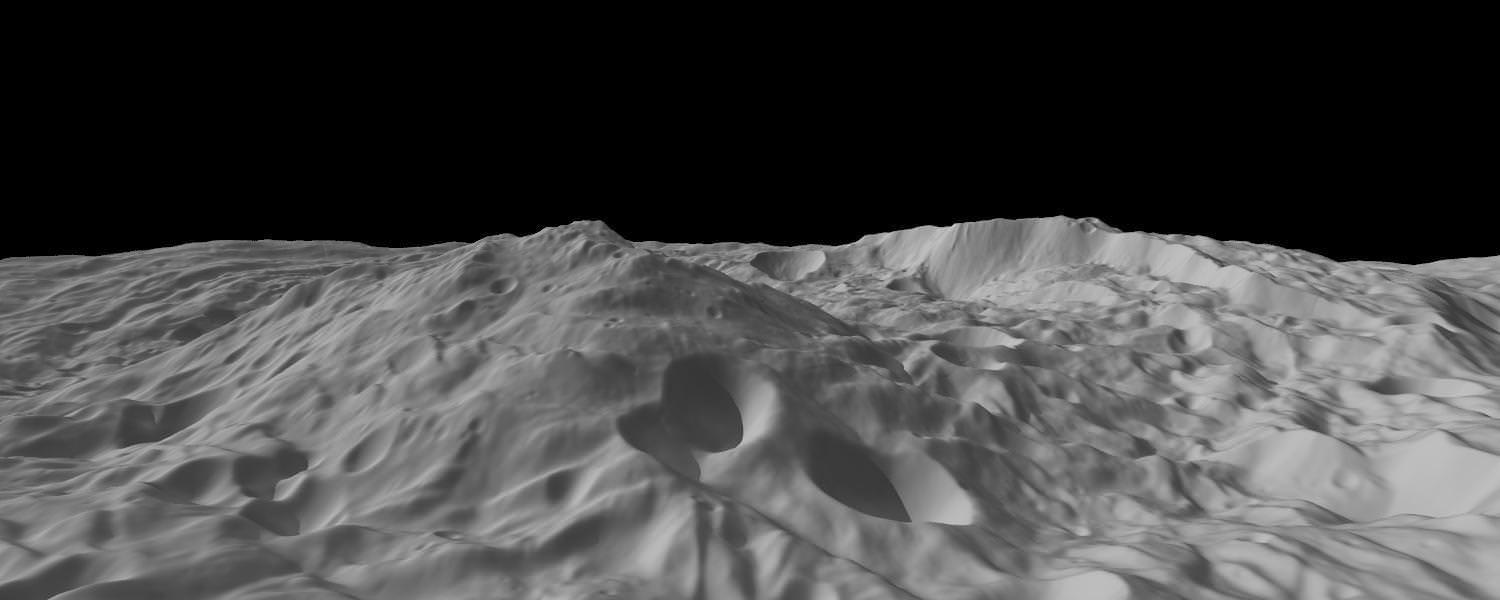[/caption]
NASA has just released an amazing new view of the mysterious south pole of Vesta that offers an oblique perspective view of the central mountain peak which is three times as high as Mt Everest. This topographic view , shown above,is completely unique to viewers from Earth and is provided courtesy of NASA’s exotic Dawn Asteroid Orbiter – newly arrived in July 2011.
The mountain peak rises about 15 miles (22 km) above the average height of the surrounding pockmarked terrain at Vesta’s south polar region – formally named Rheasilvia – and is located in the foreground, left side of the new image. A portion of the crater rim with a rather steep slope – known as a scarp – is seen at the right and may show evidence of Vestan landslides.
This oblique image derived from the on board Framing Camera was created from a shape model of the 530 km diameter asteroid. It has been flattened to remove the curvature of Vesta and has a vertical scale adjusted to 1.5 times that of the horizontal scale.
The origin of Vesta’s south polar region is hotly debated among the mission’s science team who will reveal their current theories at a briefing set for October 12 – watch for my upcoming report.
Dawn will remain in orbit at Vesta for 1 year until July 2012 and then fire up its revolutionary ion propulsion system to depart for Ceres, the largest Asteroid in the main belt between Mars and Jupiter.

NASA's Dawn spacecraft obtained this image of the giant asteroid Vesta with its framing camera on July 24, 2011. It was taken from a distance of about 3,200 miles (5,200 kilometers). Dawn entered orbit around Vesta on July 15, and will spend a year orbiting the body. Credit: NASA/JPL-Caltech/UCLA/MPS/DLR/IDA
Read Ken’s continuing features about Dawn and Vesta starting here
Dramatic 3 D Imagery Showcases Vesta’s Pockmarked, Mountainous and Groovy Terrain
Rheasilvia – Super Mysterious South Pole Basin at Vesta
Space Spectacular — Rotation Movies of Vesta
3 D Alien Snowman Graces Vesta
NASA Unveils Thrilling First Full Frame Images of Vesta from Dawn
Dawn Spirals Down Closer to Vesta’s South Pole Impact Basin
First Ever Vesta Vistas from Orbit – in 2D and 3D
Dawn Exceeds Wildest Expectations as First Ever Spacecraft to Orbit a Protoplanet – Vesta


Where is that snow cap?
Andrey,
Without smiley (the substitute for the tone of one’s voice for text), it is difficult to suggest if you’re serious of joking, but to answer you question: they haven’t any found frozen liquid anywhere on Vesta. If we did, though, it would be an amazing discovery.
I agree with N, however the correct answer is that any surface ice/water would be broken down by UV rays to gas that would be lost in space. It could however contain water /ice beneath the surface.
Very cooool.